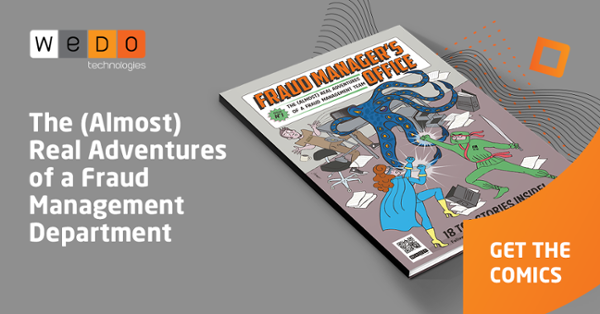The telecommunications industry prides itself on being forward looking and dynamic. Anyone lucky enough to attend any telco conference in the past year probably knows more than they ever thought possible about IoT, 5G, blockchaio chain and digital transformation.
It’s a highly competitive market so it makes sense that the people who stay at the cutting edge of new technologies are going to be the ones that thrive. Even within specialized telco sectors this happens. In fraud management circles most people are trying to get to grips with the consequences of eSim, IoT and social media integration. But in this quest to stay at the forefront of new technological waves, are we all guilty of focusing too much on the shiny new toys. Take prepaid fraud as an example. 90% of subscribers in India and Africa are prepaid. In Western Europe this number is 70% and even in the US it’s 30%. Yet, how many of us cater our newest and best services for this segment? More importantly, how many carriers have dedicated fraud controls in place to take care of this revenue stream? In 2009, KPMG surveyed the industry and found that 45% of carriers were most worried about the potential for fraud in this area. Ten years on and prepaid markets are rising, but very little action has been taken.
The risks to operators are obvious. Higher costs, lost revenues and unhappy customers & vendors pose a threat to your business.
Here are 4 steps to crack down on one of the most persistent and ubiquitous fraud types:
1) Take responsibility!
Prepaid fraudsters are a fragmented bunch. Customers, employees, dealers and suppliers are just some of the people who could be stealing from your company. And yet the response is similarly fragmented. Most operators still don’t know whether prepaid fraud is the responsibility of their revenue assurance team or their fraud management team. Do you know? Ensure you have a clear idea of who is responsible for this problem, and that they have clear controls, procedures and solutions in place.
2) Keep it in-house!
Outsourcing parts of your operation leaves lots of room for fraud. For example, if you have a third party handling your top-up voucher design, printing and/or production then you may be asking for trouble. It’s the same situation for call centres handling credit top-ups. It’s very important to identify which parts of your operation leave you vulnerable in this way. It might not be realistic for everyone to keep all their activities in-house, but as it presents such an obvious and glaring risk, it makes sense to at least guarantee some level of oversight and control. After all, you’re only as strong as your weakest link.
3) Lock the doors!
Not all fraud is executed in a high-tech way. Returning to the example of vouchers, one of the biggest opportunities fraudsters have to commit prepaid fraud is during your storage and distribution phase. It’s worth remembering that old-fashioned robbery and theft is still a problem. Try to find out where you’re still exposed to more traditional forms of fraud and act accordingly.
4) Turn on the auto-pilot!
Do you use a Fraud Management or a Revenue Assurance solution? Do you even use software at all? If you’re relying on internal teams to manually flag and monitor problems then you’re already losing the war. With a good solution in place, you’ll be automatically alerted to possible fraud events, like voucher forgery, abnormal recharge patterns, balance manipulations and other kinds of platform mishandling. Fraud happens 24/7 and if you want to keep up with the bad guys, you’ll need the tools to do it.
The most important thing to remember is that all forms of prepaid credit are basically a currency issued by you. You’re the central bank, government and treasury of your own coin. And when such a large part of your subscriber base are essentially using a currency that you’re underwriting, you’re going to want to make sure it’s secure. By applying the same level of procedures and detail as you would with other fraud types, with the right software, you can protect your bottom line. That leaves you guilt-free to focus on the more exciting developments in the industry.
Let me know what you think and please feel free to contact us anytime.



Let Us Know What You Thought about this Post.
Put your Comment Below.